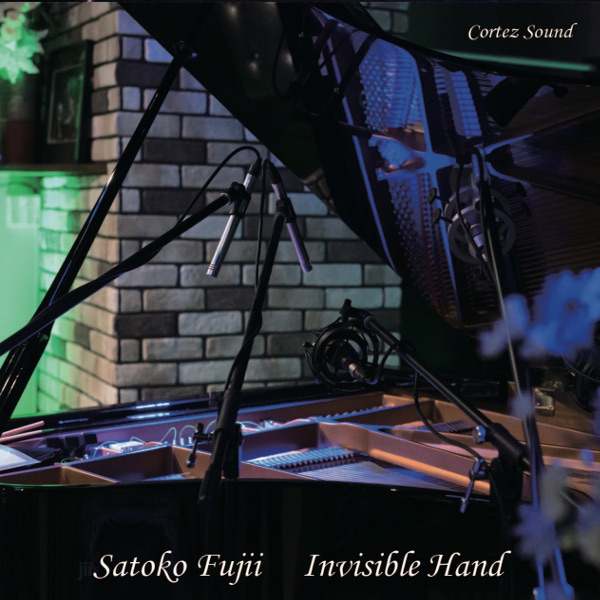
Exposé Online
What's old
Exposé print issues (1993-2011)
- 1 (October 1993)
- 2 (February 1994)
- 3 (May 1994)
- 4 (August 1994)
- 5 (October 1994)
- 6 (March 1995)
- 7 (July 1995)
- 8 (November 1995)
- 9 (March 1996)
- 10 (August 1996)
- 11 (February 1997)
- 12 (May 1997)
- 13 (October 1997)
- 14 (February 1998)
- 15 (July 1998)
- 16 (January 1999)
- 17 (April 1999)
- 18 (November 1999)
- 19 (May 2000)
- 20 (October 2000)
- 21 (March 2001)
- 22 (July 2001)
- 23 (December 2001)
- 24 (April 2002)
- 25 (September 2002)
- 26 (February 2003)
- 27 (August 2003)
- 28 (December 2003)
- 29 (April 2004)
- 30 (September 2004)
- 31 (March 2005)
- 32 (September 2005)
- 33 (May 2006)
- 34 (March 2007)
- 35 (January 2008)
- 36 (October 2008)
- 37 (July 2009)
- 38 (July 2010)
- 39 (Summer 2011)
Reviews
Satoko Fujii — Invisible Hand
(Cortez Sound CSJ0001/0002, 2017, 2CD)
by Jon Davis, Published 2017-03-24

Among the instruments common in jazz music, the piano occupies a special place as a foundational part of most ensembles. And given the instrument’s wide range of possible sounds, there is a huge variety style possible, from Thelonious Monk’s jumpy minimalism to Fats Waller’s rollicking blues to Oscar Peterson’s flamboyant invention to Bill Evans’ moody expressionism. Every jazz pianist of note has produced a body of solo work in addition to any group efforts, and Satoko Fujii is no exception. The last purely solo release I heard from her was Sketches in 2004. That was a studio recording, but Invisible Hand finds her in a live setting, captured April 28, 2016 at the Cortez club in the Japanese city of Mito. As to what school of jazz piano Fujii belongs to, the answer is “all of the above” — and also “none of the above.” In addition to various jazz idioms, she incorporates preparations, altering the instrument’s sound in ways that are quite unusual, not just the gong-like tones and percussive noises usually associated with prepared piano. From sparse Debussy-like meditations to frenetic cascades of notes to synthesizer-like sonorities achieved by reaching inside the piano, just about anything can happen. You’ll hear what might be called “abstract boogie-woogie,” vast clusters of notes that rumble in the lower register, melodic fragments broken up all over the keyboard, unpredictable rhythmic motifs, and more. The ten tracks range from one under five minutes to three topping the ten-minute mark, for roughly and hour and a half, and much of it was freely improvised. Fujii does hit on a few pieces from her previously recorded albums, including the reverential title track from her Gen Himmel album. Two of my favorites are among this album’s shorter selections. “Hayase” is a spirited romp based on the rhythmic repetition of a single note, with dizzying flurries and all sorts of craziness going on around it. “Green Cab” starts with some inside-the-piano playing, with metallic harp-like glissandos and some odd percussive sounds, then a tentative bass line comes in, unsure of a key, and then chordal jabs, fast runs, and bouncy melodic fragments appear, creating a warped stride workout that must have been a kick to watch her play live. Two full CDs of solo piano may be more than you want at a single go, but Fujii’s artistry is worthy in any size serving, and a free-spirited addition to the world of jazz keyboard.
Filed under: New releases, 2017 releases
Related artist(s): Satoko Fujii
What's new
These are the most recent changes made to artists, releases, and articles.
- Review: Zabrahana - Whales Dream in Purple
Published 2026-01-02 - Review: McLuhan - Anomaly
Published 2026-01-01 - Review: Ektör - Ektöristan
Published 2025-12-31 - Release: Chatte Royal - Mick Torres Plays Too F***ing Loud
Updated 2025-12-30 15:33:15 - Artist: Chatte Royal
Updated 2025-12-30 15:32:15 - Release: Olly Chalk - In Those Remote Stars
Updated 2025-12-30 14:01:10 - Artist: Olly Chalk
Updated 2025-12-30 13:59:56 - Review: Pietro Zollo - The Future Is Now
Published 2025-12-30 - Release: Dhope - Musical Exhibitions
Updated 2025-12-29 23:00:53 - Release: Tin Pan Alley - Tin Pan Alley
Updated 2025-12-29 22:51:10 - Release: Jeff Pearce - Infinite Ambient: Winter Landscapes
Updated 2025-12-29 22:33:12 - Release: Trio of Bloom - Trio of Bloom
Updated 2025-12-29 17:19:40 - Artist: Trio of Bloom
Updated 2025-12-29 17:16:50 - Artist: Craig Taborn
Updated 2025-12-29 17:02:15 - Release: Family - Old Songs, New Songs
Updated 2025-12-29 00:03:41 - Review: The Kirkbys - It's a Crime: The Complete Recordings
Published 2025-12-29 - Release: Various Artists - Psychedelic Underground 20
Updated 2025-12-28 23:33:26 - Artist: Dhope
Updated 2025-12-28 23:27:49 - Artist: Tin Pan Alley
Updated 2025-12-28 23:21:39 - Release: Various Artists - Psychedelic Underground 19
Updated 2025-12-28 23:04:15
